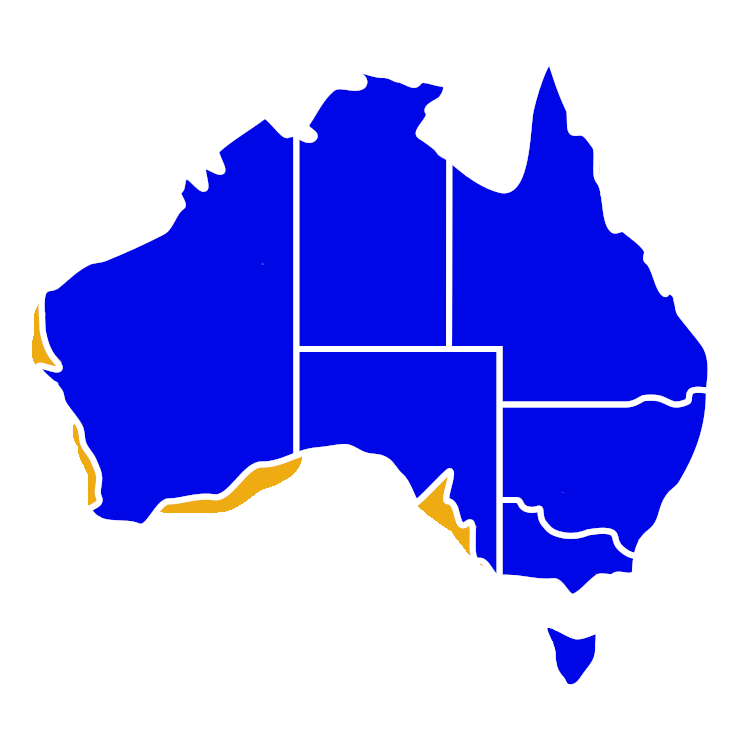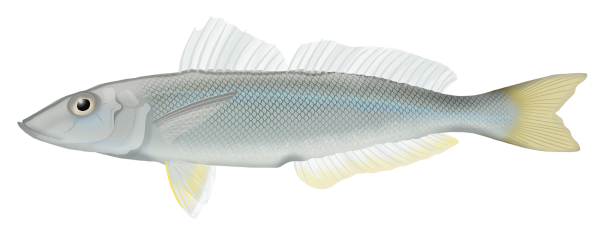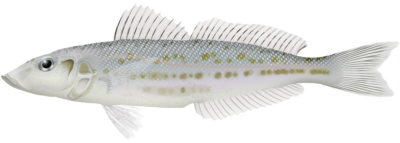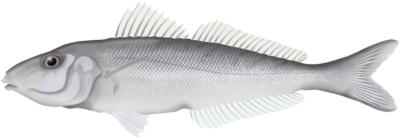Quick Facts
Distribution

Interesting Info
- Yellowfin Whiting are primarily found along the southern coasts of Western Australia and South Australia, with some populations extending into neighbouring regions.
- The Yellowfin Whiting has a slender, elongated body with a slightly arched back. It is generally silver in color with a yellowish hue on its fins and distinctive yellow to golden coloration on its pectoral and caudal fins.
- The diet of Yellowfin Whiting primarily consists of small benthic organisms such as crustaceans, molluscs, worms, and small fish. They use their protrusible mouth to feed on prey items in the sandy or muddy substrate.
- These whiting have adapted to tolerate a range of salinity levels, allowing them to inhabit estuarine, brackish, and nearshore marine environments.
- Yellowfin Whiting are known for their impressive swimming speed and agility. They can swiftly change direction and make sudden bursts of speed to escape predators or catch prey.
- he species name, schomburgkii, is in honour of the German botanist and explorer Moritz Richard Schomburgk, who extensively explored and documented the natural history of Australia in the mid-19th century.
- Their breeding season occurs during the warmer months, from late spring to early autumn. During this time, female fish release their eggs into the water, which are then fertilised externally by the males.
- The reproductive success of this species can be influenced by environmental factors, such as water temperature and salinity. Their eggs and larvae are sensitive to changes in these conditions, making their breeding success vulnerable to habitat alterations.
- Their estimated average lifespan is between 6 – 8 years.
Species Interaction
Recreational Fishing, Snorkeling & Diving
Yellowfin Whiting are a highly sought-after species for recreational fishing in Australia. Anglers appreciate their strong fight and the delicious taste of their white, flaky flesh. They are often caught using bait such as worms, prawns, or small fish. They are also a fun schooling species to watch forage for food for snorkelers and divers.
Scientific Classification
Kingdom: Animalia
Phylum: Chordata
Class: Actinopterygii
Order: Perciformes
Family: Sillaginidae
Genus: Sillago
Species: Sillago Schomburgkii
Conservation Status
In terms of conservation status in Australia, the Yellowfin Whiting is currently classified as a species of least concern. This means that its population is relatively stable, and there are no significant threats or conservation issues affecting the species at a national level.
Fish Taste Quality
Yellowfin Whiting are highly regarded for their delicious white, flaky flesh and are considered a prized table fish by many anglers and seafood enthusiasts.
Taste Rating: 4/5
How to catch
Yellowfin Whiting
Catch Difficulty: Easy
Tackle: Patternoster Rig, Running Sinker Rig, Artificial Rig
Bait: Crab, Fresh cut flesh baits, Lures, Pilchards, Prawns, Shellfish, Squid, Worms, Yabbies, Soft plastics
Technique: Keep bait on the bottom, Cast bait/jig/lure near schooling fish, Cast lures with a slow retrieve
Popularity: Highly targeted
Recreational Viewing
- Snorkeling & Scuba
Finding: Easy
Temperament: Peaceful
Location: Inner Reef, Lagoon, Seagrass Beds, Sandflats
Danger: None





